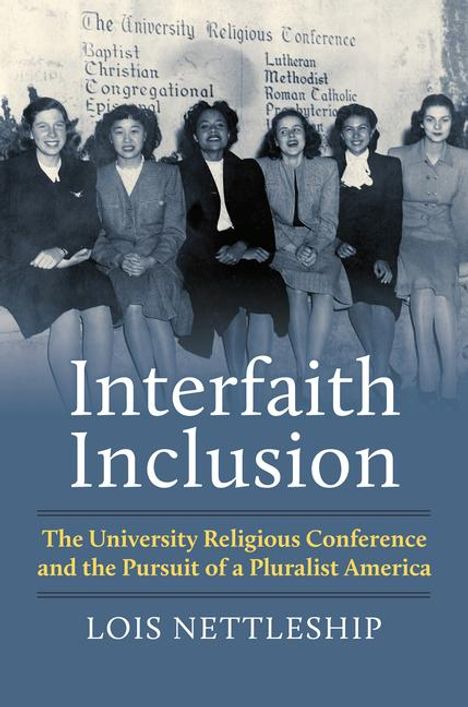Lois Nettleship: Interfaith Inclusion, Gebunden
Interfaith Inclusion
- The University Religious Conference and the Pursuit of a Pluralist America
(soweit verfügbar beim Lieferanten)
- Verlag:
- University Press of Kansas, 10/2025
- Einband:
- Gebunden
- Sprache:
- Englisch
- ISBN-13:
- 9780700640676
- Artikelnummer:
- 12323196
- Umfang:
- 320 Seiten
- Gewicht:
- 630 g
- Maße:
- 238 x 162 mm
- Stärke:
- 29 mm
- Erscheinungstermin:
- 31.10.2025
- Hinweis
-
Achtung: Artikel ist nicht in deutscher Sprache!
Klappentext
A story of pioneering students who brought together Americans of all faiths to embrace their differences, improve civil discourse, and work for the betterment of society. An inspiring model for activists, organizers, and educators seeking middle ground in a polarized world. Interfaith Inclusion tells the almost-forgotten story of the University Religious Conference (URC) and the students who sought to expand the circle of inclusion in the United States. The URC was a multifaith student organization that began in 1928, functioning primarily at UCLA. It started out by reaching across religious lines and expanded to reaching across ethnic and racial lines as well. Lois E. Nettleship begins with the origins of the group in the policies that the US War Department put in place in the First World War to build a sense of unity and inclusion among recruits of different religions. Following the war, O. D. Foster, a Congregational minister and YMCA worker in the US Army camps, applied these inclusive values to public higher education. He and others who shared his vision created the URC, which went on to create similar organizations at other universities across the nation. The URC carried out projects designed to bring students of different religious, racial, and ethnic backgrounds together and to demonstrate to the public that all of them, however different they might appear, were Americans who shared many common values. In the 1950s these projects, religious and secular, became a model for other organizations. The URC pioneered student summer trips to India that exposed them to new religions and became a model for the Peace Corps. Soon thereafter the New York City Public School System used the URC model of acceptance, led by former URC participants, to train teachers, counselors, and pupils in how to demonstrate similar kinship among diverse groups in the city. Nettleship argues that building inclusion was the work not only of prominent politicians, religious leaders, and others in the spotlight, but also of students, amateurs, and volunteers with a practical bent and a sense of civic duty. Interfaith Inclusion resurrects one of the earliest efforts in the United States to develop a diverse movement for the purpose of improving civil discourse and embracing difference. Nettleship's story of how liberal Protestants, Catholics, and Jews sought to work together to better society is particularly relevant today in a time of religious strife, division, and political polarization. Contemporary inclusive activists and educators likely have never heard of the URC, but they are continuing its legacy.

